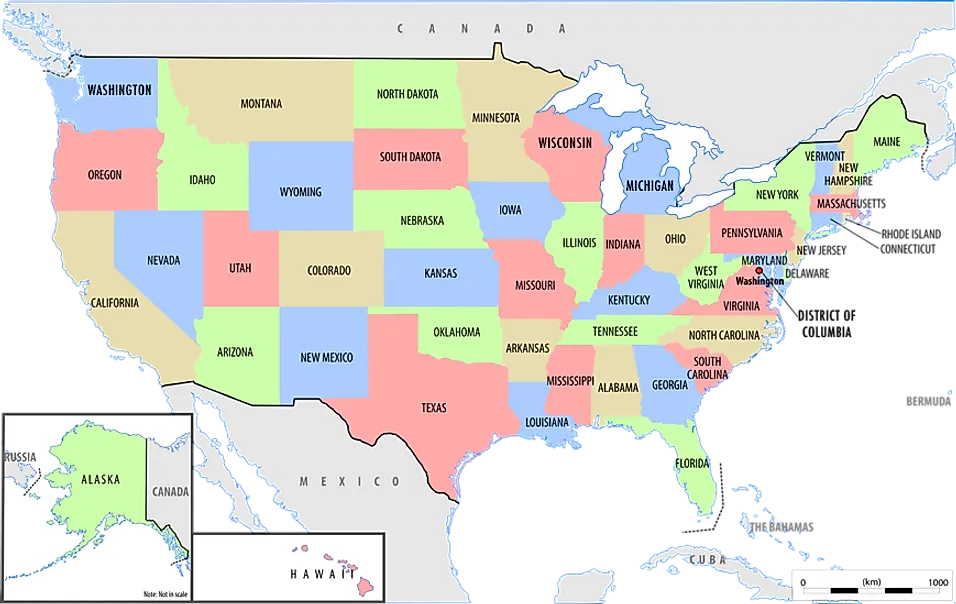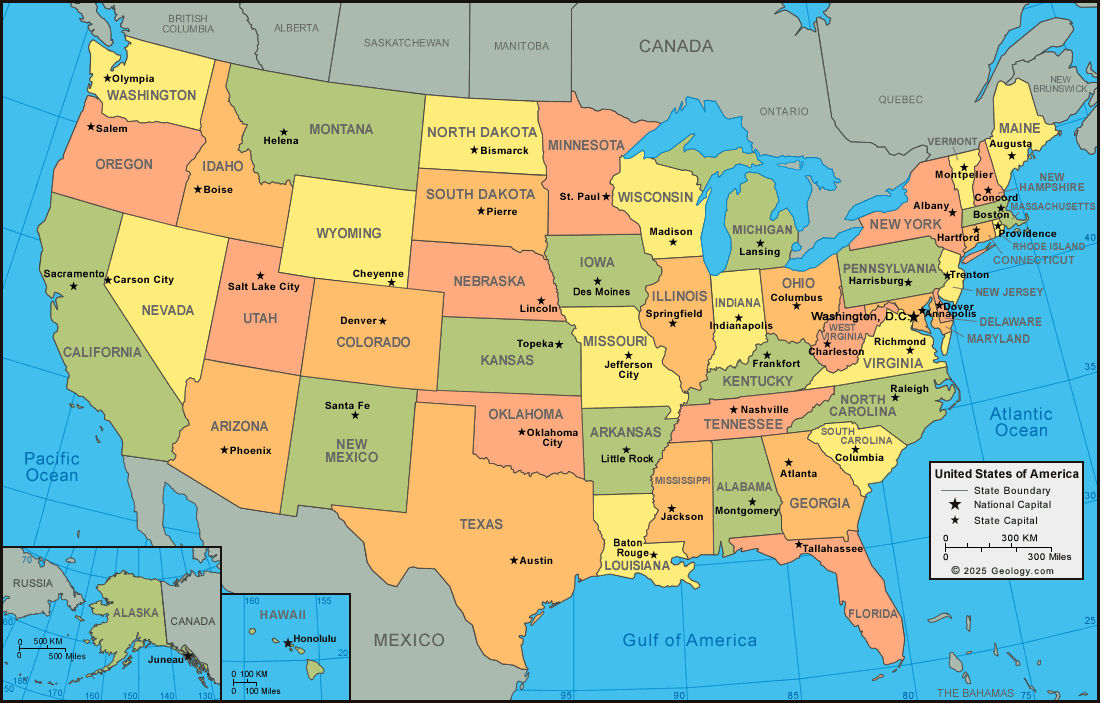Table of Contents
- Introduction
- What Makes a Place High or Low?
- How Do People Live in High Altitude US Cities?
- Life at Lower Levels - Thinking About US Cities by Altitude
- What are Some Features of US Cities by Altitude?
- Why Does the Air Feel Different in US Cities by Altitude?
- Considering the Impact of US Cities by Altitude
- Exploring Different US Cities by Altitude
The United States, often called America, is a really big country that sits in North America, you know. It's set up as a republic with fifty states and a main capital city. This huge place, it has a lot of different natural settings, from very tall mountains to sandy shores by the water, and even quiet, pretty towns. It’s almost like a collection of many small worlds all put together.
This vast land, with its forty-eight connected states that stretch across the middle parts of the continent, shares edges with Canada up north and Mexico down south. To the east, there’s the wide, open Atlantic Ocean. These wide-open spaces, they mean there are many kinds of places to live, each with its own special feel, so.
Thinking about all these varied spots, it brings up an interesting idea: how high up or low down are different communities? Some places are quite close to sea level, while others sit way up in the air. This difference in height above the ocean, it changes a lot about how a place feels and what living there is like.
- Dynasty Actors
- What To Write In Goddaughters Christening Card
- How To Start An Isp Service
- Natural Way To Dye Hair Black
- Sympathy Messages For Loss Of Father
What Makes a Place High or Low?
When we talk about a place being high or low, we are basically talking about its height above the ocean’s surface. Sea level, that's like the zero point for measuring how tall or short a piece of land is. A community that is very high up, it might be in a mountainous area, perhaps surrounded by towering peaks. A low community, on the other hand, could be right by the ocean, or maybe in a valley that dips down, you know, quite a bit. These differences are just a natural part of how the earth is shaped, and they create truly distinct living experiences.
The way the land rises and falls across the country means that some communities are quite elevated, while others are very near the water. For instance, some communities might be found on broad, flat plains that sit at a moderate height, not too high, not too low, so. Others could be tucked away in deep basins or along river systems that flow down to the sea. The kind of ground, whether it's rocky or sandy, also plays a part in how these places are formed, actually. It’s a bit like a big, varied map where every spot has its own unique vertical address.
The very air we breathe changes depending on how high up we are. Higher places have less air pressure, which can make things feel a bit different for people and even for the plants and animals that live there. Lower places, by contrast, have more air pushing down, which can feel quite normal for most folks. This shift in air is one of the most noticeable things about being in different spots when you consider us cities by altitude. It’s a fundamental part of the experience, honestly.
- What Happens To Fiona Shameless
- Francesca Farago Fiance
- Miley Cyrus Net Worth 2024
- Graham Stephan Wife
- Pic In English
How Do People Live in High Altitude US Cities?
Life in communities that sit very high above the ocean can be quite distinct. People living in these elevated spots often find that the air feels a bit thinner, as I was saying, which might mean a little more effort for breathing at first. It's something many folks adjust to over time, like. The sun's rays can feel more direct and strong up there, too, so many residents learn to protect themselves from the sun. Water might even boil at a slightly lower temperature, which is kind of interesting for cooking.
The natural surroundings in high places are usually quite beautiful, with wide-open views and often dramatic landforms. People in these communities tend to enjoy outdoor activities that suit the environment, like walking trails that go up hills, or looking at the stars, which appear incredibly bright at night. The weather can also be a bit more unpredictable, with cooler temperatures and more sudden changes, especially at higher elevations. It’s a very particular way of life, with its own set of daily routines and rhythms, you know.
Building homes and other structures in high-up areas often calls for special ways of doing things. Foundations need to be strong to handle the ground, and materials might need to stand up to colder weather or more intense sunlight. Transporting goods and services to these spots can sometimes be a bit more challenging, too. Despite these things, many people truly love living in these elevated communities, valuing the calm, the fresh air, and the feeling of being closer to the sky, really. They find a lot of peace there, and it’s a very specific kind of quiet.
Life at Lower Levels - Thinking About US Cities by Altitude
Moving to communities that are closer to the ocean's surface, life takes on a different feel. The air here is typically more dense, which means breathing feels quite natural for most people. Temperatures often tend to be milder, and the climate can be a bit more humid, especially near coastal areas. These places sometimes have a lot of greenery, and the plant life can be very lush because of the moisture in the air, so.
Communities at lower heights might be found along rivers, by large lakes, or right on the coast. This closeness to water often shapes the way people live and work. There might be more activities centered around the water, like fishing or boating, for example. The land might be flatter, which can make building and getting around a bit simpler in some respects. These areas are often quite busy, with many people and a lot of different kinds of businesses, you know.
The pace of life in lower-lying communities can sometimes feel quicker, with more hustle and bustle. Access to various goods and services is usually quite easy, and transportation networks are often very well developed. While they might not have the sweeping mountain views of higher places, these communities offer their own kind of beauty, perhaps with charming waterfronts or tree-lined streets. It’s a different kind of experience, but just as full of life and activity, generally.
What are Some Features of US Cities by Altitude?
Thinking about the features of communities when we consider us cities by altitude, it's clear that their height above the ocean plays a big part in their overall look and feel. High-up communities might have winding roads that follow the curves of hills and mountains. Their buildings might be built with stronger roofs to handle snow, or with materials that can keep warmth inside when it gets cold, so. There's often a sense of being on top of the world, with wide-open skies and distant horizons.
On the other hand, communities closer to sea level often have flatter layouts, with straighter roads and more open spaces. Their buildings might be designed to let in more cool air during warmer times, or to withstand strong winds that come off the water. You might find more bridges and waterways, and the architecture could reflect a connection to the sea or a river, you know. The plant life can be very different too, with types of trees and flowers that thrive in more humid conditions.
The very ground beneath our feet changes with altitude. Higher places often have more rocky terrain, while lower areas might have softer soil or sandy stretches, particularly near the coast. This affects everything from farming to how water drains. It's truly amazing how the natural height of a place shapes its unique character, influencing its buildings, its plants, and even the way its people live their daily lives, really.
Why Does the Air Feel Different in US Cities by Altitude?
The air feels different in communities at various heights because of something called air pressure, you know. When you go higher up, there's less air pushing down from above. This means the air itself is less dense, so there are fewer air molecules packed into the same amount of space. This is why it can feel a bit harder to breathe at very high spots; your body just gets a little less oxygen with each breath. It’s not that there's no oxygen, just less of it in each gulp of air, basically.
Conversely, when you are closer to the ocean's surface, there's more air above you, pushing down. This makes the air more dense, meaning more air molecules are packed together. So, when you take a breath at a lower height, you get more oxygen without even thinking about it. This is why most people find it easier to breathe at lower elevations. It’s a natural effect of gravity pulling air down towards the earth, actually.
This difference in air density also affects other things. For
Related Resources:



Detail Author:
- Name : Claud Blick
- Username : damaris83
- Email : xwilderman@mclaughlin.com
- Birthdate : 1978-07-20
- Address : 37729 Pearlie Centers Suite 398 Kilbackland, NJ 96947
- Phone : (646) 875-3932
- Company : Glover-Rice
- Job : Postal Service Clerk
- Bio : Consequuntur totam cumque eos quibusdam inventore. Atque similique hic quas vel pariatur laborum. Vitae voluptate ut sit eum et. Molestias explicabo consequatur totam illum sequi repellendus.
Socials
linkedin:
- url : https://linkedin.com/in/oma.reinger
- username : oma.reinger
- bio : Est placeat fuga occaecati.
- followers : 4943
- following : 2580
twitter:
- url : https://twitter.com/oma.reinger
- username : oma.reinger
- bio : Sit laudantium quidem dolorum aut. Repellat eos vitae animi libero praesentium enim perspiciatis. Saepe et sint reiciendis voluptatum nostrum vel.
- followers : 5749
- following : 831